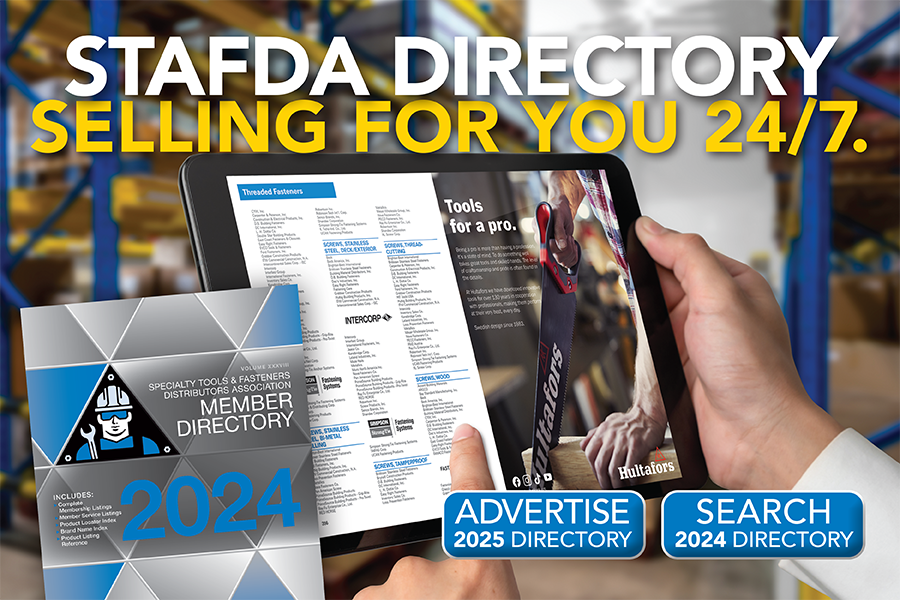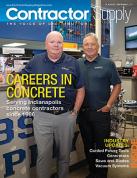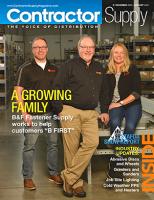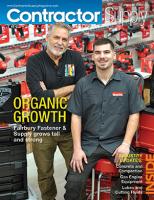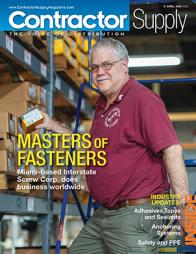Robert Footlik: Avoiding Warehouse Failures
Small investments in warehouse technology can deliver huge rewards.
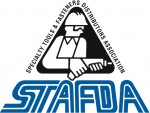 |
 |
| STAFDA showroom and warehouse consultant Robert B. Footlik is CEO of Footlik & Associates, LLC, Evanston, Ill. |
Many people believe that the first step in developing a successful technology project is to initiate a data collection process and a literature search to find out the basic parameters as well as the hardware/software that is available. This can be a legitimate approach, but only if one is supremely confident that their current methods of operation provide a legitimate base for projecting costs and justifying the project.
All too often, amateurs and “sales engineers” develop wonderful solutions — then look for problems. Approaching any warehouse situation without fully examining the current facilities, people, procedures and assumptions can create some monumental mistakes.
Take a simple example. Perhaps you would like to send a letter from New York City to Los Angeles using Pony Express Carriers. Each “Post Rider” rides his horse for thirty miles and hands the letter to the next rider. While it is possible that your letter will get there faster than normal postal delivery, when you consider all of the horses, people, way stations and support systems involved, this could be a very expensive way to operate. In fact you could charter a 747 cargo plane for far less money.
These absurd extremes neglect a spectrum of opportunities in between. Solutions could include everything from sending it FedEx, e-mailing an electronic copy or giving it to your aunt who is going to L.A. Comparing new technology purely with a current method of operation that uses antiquated methods, untrained people and wholly inadequate tools will always provide inflated results.
Reexamine the Basics
The point of departure is to reevaluate the systems that are in place and examine these for assumptions and areas for improvement. An excellent place to start is elimination of wasted travel. Walking 30 feet to and from any particular point 100 times a day equals 300-plus miles per year. People may look like they are busy, but are they truly productive; or do they only look busy because they are untrained and do not know what to do or how to do it?
Not only must people be trained to know how to perform, but they also have to be motivated with a sincere desire to accomplish their goals in the most efficient manner. Money is not the only motivator, and quite often it is the poorest.
What has to be developed is a sense of pride in a job well done. This means emphasizing individual satisfaction, as well as the benefit of the company. For example, avoid terms such as “error rate,” or “unquality event,” to describe quality. Instead, use “percentage of perfection” to emphasize that the goal is not to reduce errors, but to eliminate them completely to help people attain perfection.
Communication is a vital component in this process. Let your people know how well they are performing and encourage them to do even better in the future. Posting the daily output and creating a sense of competition can double and even triple productivity while simultaneously enhancing quality. This means two-way communications. People who are motivated and trained can tell you what is right and wrong with the operation, which will improve your perception of the problem.
Examining current procedures is another valuable tool. Just as extraneous physical steps can kill productivity, complex and superfluous procedures not only affect the operation at hand but also surface at numerous other points. One extra copy of an otherwise necessary form still has to be evaluated, filed and handled by additional personnel.
Eliminating redundant procedures is a great motivator. No one likes to see their work go into the waste basket and a fast way to kill the spirit of an operation is to require what appears to be “busy work.”
Anytime you hear about a system that took an operation “from the stone age” to modern automation in one step, you have every right to be skeptical. Stone Age operations frequently are found in cave-like environments. For a fraction of the cost of new technology, one can create a far more efficient operation by changing the flow, layout, lighting or schedules of the existing operation.
Consider an operation with two loading docks that needs more input and output. An optimum answer might be a night shift — resources that already exist can now be utilized sixteen hours a day instead of eight. Similarly, fancy new warehouse transportation systems may be a poor substitute for a new loading dock located closer to the point of usage.
People depend on information systems to provide direction. Poor productivity in a picking area may be a symptom. The roots of the problem may lie in rearranging documents into a more “user friendly” format, then purchasing an extra printer to provide the packing list in customer format at the point of packing.
Warehouse Management Systems (WMS) that organize the workload and direct the work may be more effective than a multi-million dollar handling system. Paper-based bar coding utilizing smart phones or used readers can do wonders by improving quality and productivity without breaking the bank. Certainly Radio Frequency (RF) based and voice-directed online computer systems do a better job, but will the large extra expense be incrementally justifiable in your context?
Don’t stop the analysis only at the edges of your building. Examine what is going on in the real world. Often a problem can be “side stepped” or eliminated with a little creativity and ingenuity. Creating kits of parts, modifying packaging to increase the quantity, developing customer- or job-specific solutions and other changes can greatly simplify internal processes.
Often the key is to seek affinities between products or lines. For example, while coil nails are sold alone, pneumatic nailers usually are sold with tool boxes and an initial supply of nails. Creating a single package for multiple items is a marketing ploy that also reduces or spreads out the work load in the warehouse.
Take this a step further using customer and sales staff feedback. Tremendous savings can be made through customer education, cooperative salesmanship or closer scrutiny of the situation.
One way of cutting through any obfuscation is to visit with both your internal and external customers and involve them in the planning process. You have one perspective but they have insight into their particular problems. Together, you can develop solutions far beyond what anyone imagined working alone — without resorting to expensive or complex technology.
One note of caution
Don’t just look at the “real world,” look at the “best of all possible worlds.” Not only should you be researching equipment that will solve your problems, but it’s also
vital to look at applicable standards, both published and implied, so that these can be incorporated in your solution. Adhering to International Standards can vastly improve many warehouse operations. There is no point in purchasing cheap, junk pallets if what you really should be buying or leasing are 48- x 40-inch standard pallets that have a resale value.
Similarly, reusable cardboard or plastic totes can simplify picking and delivery if they are designed around the customer’s job site requirements. Adorning the standardized units with vendor logos and your company name moves a handling solution into the sales or co-op advertising budget.
Another frequently overlooked source of valuable information is to “brainstorm” with trained, creative individuals. If you never led or participated in a brainstorming group, research what it takes to pull ideas out of people. What you are trying to create is a “focus group” of people who are brought together to consider anything and everything that may be applicable to the situation. Even an idea that is totally “off the wall” may have merit when reshaped by the group. This is also a great way to evaluate new technology before it is purchased and implemented.
The goal is to question all assumptions constructively and put many solutions and ideas on the table as quickly as possible. In the first go-around, nothing is too improbable or ridiculous. The most impossible ideas are often the best because they are also the most creative and practical.
Solutions and ideas are then refined to determine what is most applicable in your context. Quite often, a change in assumptions will solve the problem. Something simple can save millions of dollars and cut months off of the implementation process. The ultimate answer may be to go out of business and use a third-party provider to perform functions that you yourself are doing inefficiently. This may sound ridiculous, but many companies have eliminated their own delivery fleets and now use United Parcel, independent nonunion truckers or other services.
Don’t get too hung up on titles in the focus group. The more people involved the better, provided the group can still work together constructively. The insight of the janitor may be far more valuable than the “knowledge” of the Chairman of the Board. Titles and costumes are irrelevant. The character of the idea is paramount. In fact, you are better off with lower-level people who can work together than top management who may try to dominate the group.
When the ideas are on the table and being reviewed, keep in mind that many of these when implemented will change the basic data used for comparison with new technology. In one operation a suggestion by a newly hired packer became the basis for a change in the shipping carton. The net result was a 100 percent increase in overall productivity. This new rate of production, when compared against automation, proved conclusively that not only was the new system unnecessary, it was likely to lower the level of productivity. Major capital expenditures for reduced productivity do not look good on your resume or financial statements.
The tools for improving materials handling and enhancing warehouse operations have changed considerably over the last 25 years. The industrial engineer’s repertoire in the past consisted mostly of hardware such as forklift trucks, conveyors, pallet racks and shelving. Today’s “bag of tricks” includes personal computers, bar code readers, warehouse software, data management, incentive systems and other indirect solutions. Quite often, one can do more with $10,000 for new cell phones or tablets, bar code scanners and warehouse software than can be accomplished with $500,000 in automated equipment.
But $500 in training may accomplish far more than $5 million in automated materials handling systems. Any idiot can accomplish miracles with a large enough budget — the government proves this every day. A truly creative distributor sets the stage for technology success by working from a minimum capital expenditure as the base and pushes the existing systems to their logical and reasonable extreme.
Don’t be fooled by the salesman who says “I’ve got a wonderful solution, now what’s the problem?” And above all beware of articles, speakers and other sources that tout the wonders of technology without also commenting on the problems and costs involved. High-tech is not a panacea, it is a tool. In the hands of a craftsman, it will be cost-effective and create a thing of beauty. In the hands of a fool, it is a recipe for catastrophe. Some of your customers prove this every day.
Remember, the best systems attack the roots of the problem, not the symptoms. Do your homework before you look at the technology: work with the people who do the tasks — they are your greatest resource — and question everything, especially the defined parameters. Flexibility of thinking, as well as flexibility of equipment, is your best insurance policy. CS
STAFDA showroom and warehouse consultant Robert B. Footlik is CEO of Footlik & Associates, LLC, Evanston, Ill. He writes STAFDA’s Warehouse Advisory and can be reached by email at robert@footlik.com.




